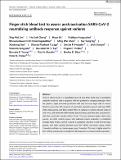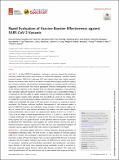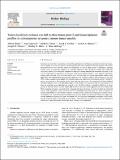MIT Open Access Articles
The MIT Open Access Articles collection consists of scholarly articles written by MIT-affiliated authors that are made available through DSpace@MIT under the MIT Faculty Open Access Policy, or under related publisher agreements. Articles in this collection generally reflect changes made during peer-review.
Version details are supplied for each paper in the collection:
- Original manuscript: author's manuscript prior to formal peer review
- Author's final manuscript: final author's manuscript post peer review, without publisher's formatting or copy editing
- Final published version: final published article, as it appeared in a journal, conference proceedings, or other formally published context (this version appears here only if allowable under publisher's policy)
Some peer-reviewed scholarly articles are available through other DSpace@MIT collections, such as those for departments, labs, and centers.
If you are an MIT community member who wants to deposit an article into the this collection, you will need to log in to do so. If you don't have an account, please contact us.
More information:
Recent Submissions
-
Finger stick blood test to assess postvaccination SARS-CoV-2 neutralizing antibody response against variants
(Wiley, 2022-01-22)There is clinical need for a quantifiable point-of-care (PoC) SARS-CoV-2 neutralizing antibody (nAb) test that is adaptable with the pandemic's changing landscape. Here, we present a rapid and semi-quantitative nAb test ... -
Rapid Evaluation of Vaccine Booster Effectiveness against SARS-CoV-2 Variants
(American Society for Microbiology, 2022-09-07)As the COVID-19 pandemic continues, countries around the world are switching toward vaccinations and boosters to combat the pandemic. However, waning immunity against SARS-CoV-2 wild-type (WT) and variants have been widely ... -
Tumor-localized catalases can fail to alter tumor growth and transcriptional profiles in subcutaneous syngeneic mouse tumor models
(Elsevier BV, 2023-08)Catalase is an antioxidant enzyme that catalyzes the rapid conversion of hydrogen peroxide to water and oxygen. Use of catalase as a cancer therapeutic has been proposed to reduce oxidative stress and hypoxia in the tumor ...


